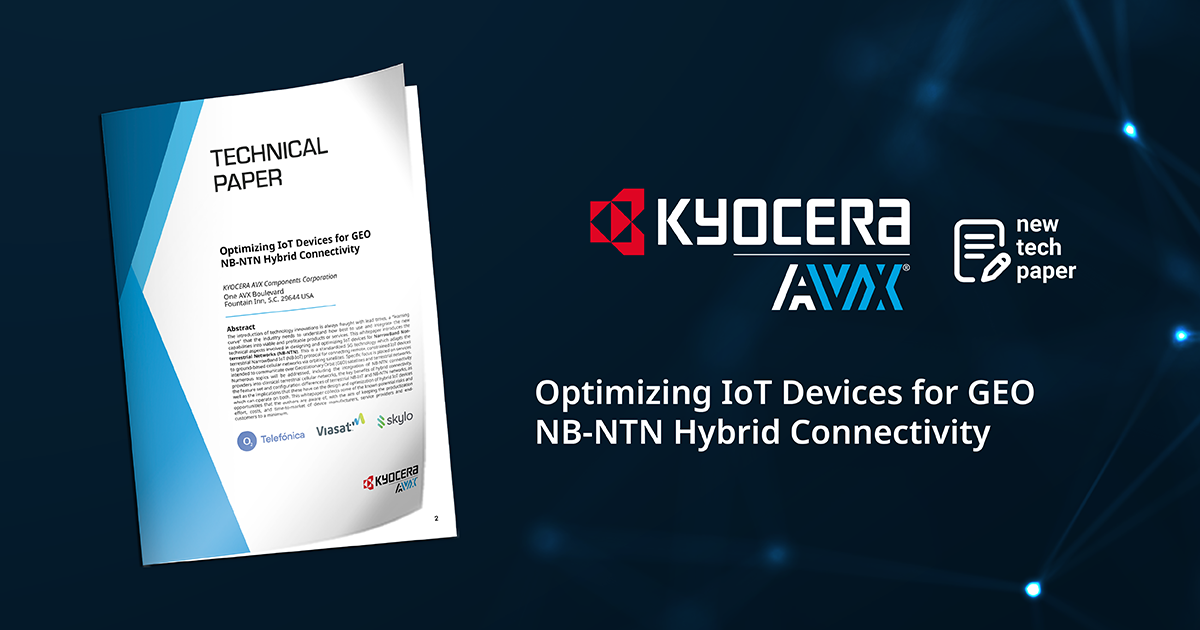
Optimizing IoT Devices for GEO NB-NTN Hybrid Connectivity
Written in Collaboration with: Telefonica, Viasat, & Skylo
Abstract:
The introduction of technology innovations is always fraught with lead times, a “learning curve” that the industry needs to understand how best to use and integrate the new capabilities into viable and profitable products or services. This whitepaper introduces the technical aspects involved in designing and optimizing IoT devices for Narrow-Band Non-terrestrial Networks (NB-NTN). This is a standardized 5G technology which adapts the terrestrial Narrow-Band IoT (NB-IoT) protocol for connecting remote, constrained IoT devices to ground-based cellular networks via orbiting satellites. Specific focus is placed on services intended to communicate over Geostationary Orbit (GEO) satellites and terrestrial networks. Numerous topics will be addressed, including the integration of NB-NTN connectivity providers into classical terrestrial cellular networks, the key benefits of hybrid connectivity, the feature set and configuration differences of terrestrial NB-IoT and NB-NTN networks, as well as the implications that these have on the design and optimization of hybrid IoT devices which can operate on both. This whitepaper collects some of the known potential risks and opportunities that the authors are aware of, with the aim of keeping the productization effort, costs, and time-to-market of device manufacturers, service providers and end-customers to a minimum.
DOWNLOAD TECHNICAL PAPER
On June 18, 2025 / Antenna-News, Antennas, News / Events / Press, Technical Articles / Whitepapers


